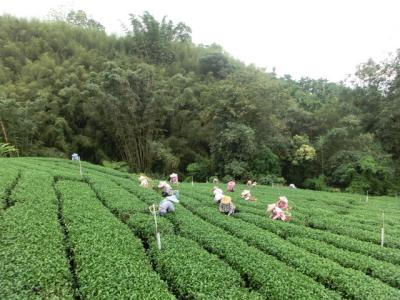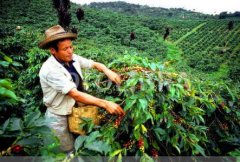A brief introduction to the Market Price of Fine Coffee Bean varieties in Costa Rica with Fruit flavour

At this time, we would also like to mention a kind of honey treatment that we just saw last year:
White honey
It is true that with the development of science and technology, human brains are infinite, and people keep trying in different proportions. Bai Mi removes about 80% of the pectin, which is equal to only a little bit, which is a bit close to washing in taste.
Costa Rican coffee has always been regarded as a perfect type of classic flavor, balanced, clean and mild is his tone. San Juan Youzhuang, a processing plant in the western valley, comes from a famous orange county (Naranjo), and is famous for its excellent natural geographical conditions and excellent regional planting and management techniques. it has almost perfect classical flavor and lively citrus flavor in acidity. BlackBerry fruit aroma, acidity and taste thick, melon sweet taste smooth, drupe / micro-flower aroma, while the finish has a significant coffee flower aroma, is a taste of coffee full of Latin country style. Its flavor characteristics are brown sugar, floral aroma, almonds, black tea, oranges and sweet spices, mild acidity and syrup taste. Coffee is the country where coffee was first introduced into Central America and has a long history. Coffee organization from production to marketing system is complete. Because it is located in the Central American Gorge, there are many volcanoes, it has the natural advantages of sunshine and land, and the climate is reconciled by Pacific and Atlantic currents and sea breezes at the same time, the coffee produced has the characteristics of local micro-climate and soil conditions, in terms of quality and quantity, Costa Rican coffee has always been recognized by the world, and has been rated as one of the world-class high-quality coffee. Costa Rican coffee has been cultivated for two hundred years. It was first planted on the slopes of the Poas and Barva volcanoes, today known as the Central Valley (Central Valley). The seven main coffee producing areas are from northwest to southeast, along with the inland central plateau.
The taste difference between honey treatment and washing treatment:
Higher sweetness, higher sugar content and higher alcohol thickness than washing (under the premise of the same baking degree)
Honey-treated beans need to be well ventilated when they are dry, otherwise the retained pectin mucosa is easy to ferment or mildew and cause bad smell.
We usually see the treatment of honey: yellow honey, red honey, black honey.
Huangmi: (Yellow Honey)
Retain about 30% of the pectin and dry it directly with sunlight for about 8 days, so that the water content reaches a stable value.
Red Honey: (Red Honey)
Retain 80% of the pectin, because more pectin is retained, so it takes more time to dry, while reducing the time of direct sunlight exposure, and shading cloth is also used in some places, which takes about 12 days to dry.
Black honey: (Black Honey)
Almost no pectin is removed, and the pectin is thicker, so it takes about 20-25 days to dry and dehydrate.
In Costa Rica, there are many small but boutique coffee estates like Elsa, whose idea is to constantly improve the quality of raw coffee beans and get out of their own way of "boutique coffee" in order to obtain the best economic benefits.
Coffee is an important export product of Costa Rica, which earns a lot of foreign exchange for the country every year and is vividly called the "golden seed". Costa Rica's unique natural conditions are very suitable for growing high-quality coffee varieties. Although the output is small, Costa Rican coffee always occupies an important position in the international boutique coffee market with its excellent quality.
The Colombian government attaches great importance to the development of the coffee industry. in addition to promulgating laws prohibiting the cultivation of coffee varieties with poor flavor, the Colombian government has also specially set up the National Coffee Administration to promote high-quality coffee varieties and help coffee farmers to improve their coffee planting and management technology. provide technical support for coffee bean quality identification. At the same time, some coffee gardens have opened up a unique "coffee culture tour" to promote the coffee industry through tourism.
In recent years, in order to better meet the needs of the international coffee market, some coffee growers focus on the current pursuit of green life and vigorously grow organic coffee. Although the manpower and capital investment is large, but once certified by the international organic coffee certification body, it can be sold at a higher price. In addition to organic certification, there are also some world-renowned professional coffee certifications such as Rainforest Coffee Certification, Shade Coffee Certification and International Fair Trade Certification, which provide channels for Costa Rican boutique coffee to expand the international coffee market.
Yellow honey: first remove about 40% of the pectin, dry directly with light, continue to use water content for about 8 days to achieve a stable value.
Red honey: first remove about 25% of the pectin, because there is more pectin retained, so it takes more time to dehydrate, while reducing the time of direct sunlight exposure, some places will also use shading cloth, which will take about 12 days.
Black honey: almost no pectin has been removed, and the pectin is thicker, so it will take about 20-25 days to dry and dehydrate.
Important Notice :
前街咖啡 FrontStreet Coffee has moved to new addredd:
FrontStreet Coffee Address: 315,Donghua East Road,GuangZhou
Tel:020 38364473
- Prev

Costa Rican coffee beans, coffee beans
Costa Rica's high latitudes produce coffee beans famous in the world, rich, mild taste, but extremely sour, coffee beans here are carefully processed, it is because of this, only high-quality coffee. Tarasu, south of San Jos, Costa Rica's capital, is one of the country's most prized coffee plantations. Tarrazu in the World
- Next

A brief introduction to the cultivation of fine Costa Rican coffee beans, geographical location, climate and altitude
Coffee and bananas are the country's main exports. Coffee was introduced into Costa Rica from Cuba in 1729. Today, its coffee industry is one of the well-organized industries in the world, with a yield of 1700 kg per hectare. Costa Rica, with a population of only 3.5 million, has 400 million coffee trees, and coffee exports account for 25 per cent of the country's total exports. Costa Rica has also benefited from
Related
- Detailed explanation of Jadeite planting Land in Panamanian Jadeite Manor introduction to the grading system of Jadeite competitive bidding, Red bid, Green bid and Rose Summer
- Story of Coffee planting in Brenka region of Costa Rica Stonehenge Manor anaerobic heavy honey treatment of flavor mouth
- What's on the barrel of Blue Mountain Coffee beans?
- Can American coffee also pull flowers? How to use hot American style to pull out a good-looking pattern?
- Can you make a cold extract with coffee beans? What is the right proportion for cold-extracted coffee formula?
- Indonesian PWN Gold Mandrine Coffee Origin Features Flavor How to Chong? Mandolin coffee is American.
- A brief introduction to the flavor characteristics of Brazilian yellow bourbon coffee beans
- What is the effect of different water quality on the flavor of cold-extracted coffee? What kind of water is best for brewing coffee?
- Why do you think of Rose Summer whenever you mention Panamanian coffee?
- Introduction to the characteristics of authentic blue mountain coffee bean producing areas? What is the CIB Coffee Authority in Jamaica?

